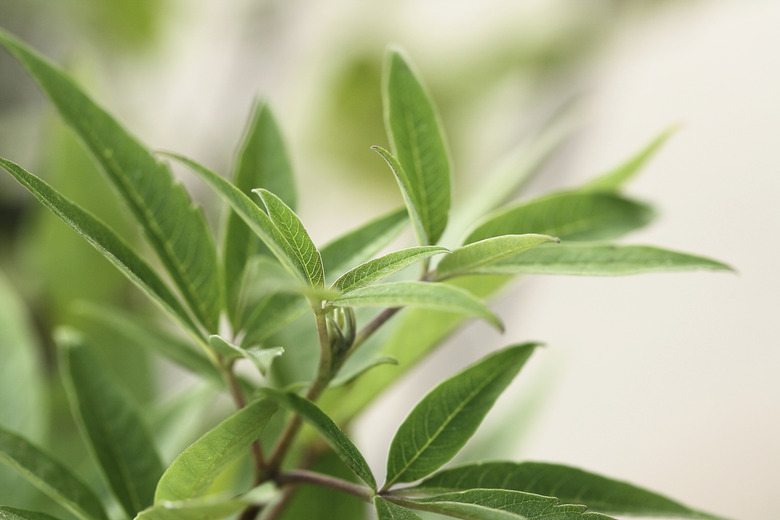When To Prune Vitex?
Vitex presents vibrant lilac-colored blossoms every summer against a backdrop of gray-green foliage, making it a desirable substitute for the mild-climate loving lilac (Syringa vulgaris).
Vitex presents vibrant lilac-colored blossoms every summer against a backdrop of gray-green foliage, making it a desirable substitute for the mild-climate loving lilac (Syringa vulgaris). This fast-growing, low-maintenance large shrub or small flowering tree prefers hot, arid climates, and when happy it produces a profusion of purple flowers. Prune in the late winter before new growth begins and deadhead through the summer, and your efforts will encourage new wood and more flowers while rewarding you with a colorful, well-managed tree.
Vitex or Lilacs
Lilacs prefer U.S. Department of Agriculture plant hardiness zones 3 to 7, but they don't survive the lengthy Southern summer heat and brief winters. Vitex has become a favorite substitute for lilacs in xeric landscapes in USDA zones 6 to 9.
Controlling the Double-Take Tree
Vitex is considered a double-take tree, often earning additional looks from people who wonder how a lilac bush can grow in USDA zones 8 or 9. For this reason, another common name is the lilac chaste tree.
- Vitex presents vibrant lilac-colored blossoms every summer against a backdrop of gray-green foliage, making it a desirable substitute for the mild-climate loving lilac (Syringa vulgaris).
A second reason for the double-take is the resemblance to marijuana (Cannibis sativa), which thrives in USDA zones 7 to 11. The lanceolate leaflet shape on both are palmately compound and radiate out from a center point on the leaf. The five to seven leaflets are serrated on both the marijuana and vitex leaves. They further resemble each other in similar shades of green, but the appearance is the only resemblance.
Vitex is a fast-growing, multi-trunked small tree in USDA zones 8 and 9 and more shrub-like in USDA zones 6 and 7 where cold weather often freezes it to the ground. Pruning benefits this tree if you want repeat blooms and if you want a more open tree shape.
Prune in Late Winter
If living in USDA zones 6 and 7, hard freezes and occasional snows will kill the above-ground branches. These will need to be removed in late winter, or before new growth begins in the early spring. If living in USDA hardiness zones 8 and 9, thin out low branches, crossing branches and suckers in late winter, and prune dead, non-productive branches in mid-spring. Leaves will grow on old growth but vitex flowers occur only on new growth and this season's wood.
- A second reason for the double-take is the resemblance to marijuana (Cannibis sativa), which thrives in USDA zones 7 to 11.
- Vitex is a fast-growing, multi-trunked small tree in USDA zones 8 and 9 and more shrub-like in USDA zones 6 and 7 where cold weather often freezes it to the ground.
Deadhead Through the Summer
A flush of strikingly attractive purple flowers cover this low-maintenance woody plant in early summer's first bloom. As with annuals and perennials, if continued flowering is desired the spent flowers need to be deadheaded. Remove the clusters of seeds both to encourage flowering and to prevent the seeds from germinating and creating a weedy appearance. If the goal is to keep your vitex small and manageable, deadhead regularly through the summer to keep it compact.
Low Maintenance or Well Shaped is Your Choice
Vitex can be a low-maintenance small tree that sprawls and reaches heights of 10 to 20 feet in the warmer sections of its preferred growing range. If placed in a location where this shape complements the landscape, most maintenance will involve removing the seeds. Deadheading and late-winter pruning combine to manage the small tree as a compact specimen. Use a pair of bypass pruners or longer bypass loppers on a smaller shrub; pruning a small vitex tree requires a 12-to-14 foot telescoping bypass pruner. Don't neglect sanitizing your pruning tools between cuts in 70 percent isopropyl alcohol for two minutes when moving from one branch to another.
- A flush of strikingly attractive purple flowers cover this low-maintenance woody plant in early summer's first bloom.
- As with annuals and perennials, if continued flowering is desired the spent flowers need to be deadheaded.
References
- Fine Gardening Plant Guide Genus: Vitex
- Floridata: #259 Vitex agnus-castus
- Missouri Botanical Garden: Syringa vulgaris 'Sensation'
- Texas AgriLife Extension: Vitex, or Chaste Tree (Vitex agnus-castus)
- University of Tennessee Extension: Best Management Practices for Pruning Landscape trees, Shrubs, and Ground Covers
- Forest Service Department of Agriculture Tree Fact Sheet: Vitex negundo 'Heterophylla' Cut Leaf Chastetree
- University of Arizona Ag Extension Backyard Gardener: Sanitizing Pruning Tools
- Floridata: Cannibas sativa

